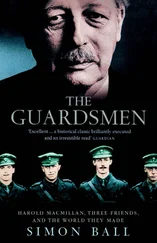What may have sealed the decision was that when Banks and Solander were at the Cape, they had met a Swedish soldier, Franz Pehr Oldenburg, who was working for the Dutch East India Company at the Cape and who was very interested in natural history, having already amassed a personal herbarium.[14] Before Banks and Solander left the Cape for England, they had made an agreement with Oldenburg to collect specimens for them after their departure. The specimens arrived in London sometime in 1772.[15] If Oldenburg was still at the Cape when Masson arrived, the benefits would be substantial, since, in addition to his local botanical knowledge, he spoke Dutch, which Masson did not.
It was decided that Masson would travel to the Cape by the beginning of April 1772 at the latest.[16] On 5 May Cook received an order from John Montagu, 4th Earl of Sandwich and First Lord of the Admiralty, informing him that Francis Masson would be joining the ship for a passage to the Cape of Good Hope.[17] He would thus be sailing with Banks for part of the way, but five days after the order from Sandwich, the Resolution was given its first trial for its intended Pacific voyage. At the mouth of the Thames, Robert Cooper, the ship’s first lieutenant, declared to Cook that he would not risk the ship at sea in its present top-heavy state. The Resolution was ordered back to Sheerness, and the superstructure, which Banks had designed and which the Admiralty had built for him, was removed.[18] Learning of this Banks withdrew from the voyage and took his personal, and rather large, entourage with him.
In its new slimmed-down version, the Resolution , in company with HMS Adventure , left Plymouth on 13 July 1772. Masson had new scientific companions – Johann Forster and his son Georg Forster, the two naturalists who were hurriedly assigned to the ship following Banks’s departure. After two short stops, the first at Madeira and the second in the Cape Verde Islands, the ships anchored in Table Bay. Masson stepped into a bustling town at the foot of Table Mountain, a Dutch settlement with a population of around 5000 people, about half of whom were white: the black population was mostly composed of slaves owned by the Dutch East India Company and imported from East Africa and the Indian Ocean region.[19]
What instructions he carried with him we don’t know but within less than two months, on 10 December 1772, Masson headed to the interior, in an easterly direction, accompanied by Franz Pehr Oldenburg, who was still at the Cape, and an unnamed Khoikhoi, who was in charge of the wagon driven by eight oxen.[20]
Masson’s report of his expedition, written to Sir John Pringle, was read to the Fellows of the Royal Society in London. It was short and, apart from providing some information about where the party went, it contained few details. What we do know is that they got as far as the town of Swellendam in the Western Cape, about one hundred and fifty miles to the east of the Cape. (When Cook was at the Cape he reported that the Dutch had settled an area which, at its greatest extent, exceeded 900 miles and 28 days’ journey time.)[21] On 20 January 1773, after a two-day stay in Swellendam, they set off to return to the Cape by the same route they had taken out. Masson mentioned that he had collected and sent seeds of several species of heather back to Kew, which had germinated and been successfully grown there while he was still at the Cape.[22]
On his return to Cape Town, probably in February 1773, Masson was in for an unexpected treat: a fellow plant collector and a trained botanist had arrived in town.[23] Carl Peter Thunberg, who was born in the same year as Banks but in southern Sweden, had studied under Linnaeus at Uppsala University and had taken a medical degree. Like other disciples of Linnaeus, he left Sweden for foreign shores. Thunberg arrived in Amsterdam in August 1770 where he worked on plant collections from other parts of the Dutch Empire. In December 1771, he began his long journey to the East via the Cape where he arrived on 16 April 1772 in order to collect plants and learn Dutch. After acquainting himself with Cape Town and its local botany, including day trips into the surrounding countryside, on 7 September, Thunberg set out with three European companions, two Khoikhois and an oxen-driven cart for the interior: first to the north and then eventually in the direction of Swellendam and beyond. They were back in Cape Town on 2 January 1773.
At some point between February and September 1773, Masson and Thunberg met and decided to travel together on a botanical expedition. On 11 September they set out from Cape Town and headed in a northerly direction for about 100 miles from their point of departure. Masson could see that the decision to go to the Cape to collect was the right one as he looked down on the scene unfolding before him, on the sea coast from St Helena Bay back to the Cape: ‘The whole country’, he wrote, ‘affords a fine field for botany, being enamelled with the greatest number of flowers I ever saw, of exquisite beauty and fragrance.’[24] Having reached their most northerly point, the party turned southeast, heading again to Swellendam, and finally reached the ocean at Mossel Bay on 16 November. There they turned inland and made their way again in a southeasterly direction until they met the ocean for a second time at Algoa Bay (near present-day Port Elizabeth) on 14 December, almost five hundred miles from Cape Town. They had been away for months. They pushed on a little further to the east until they were on the banks of the Sundays River, which flows into Algoa Bay. But the Khoikhoi people they employed refused to go any further. The oxen were sick and the carts near collapse.[25] Reluctantly, they turned back and, retracing their steps, they arrived in Cape Town on 29 January 1774.
Masson referred on many occasions to the beauty of the plants he and Thunberg encountered but, apart from mentioning that he obtained specimens of what he called geraniums, stapelias and ericas near the end of the journey, he failed to specify what else he had collected.[26]
While they were in Cape Town during 1774, Thunberg and Masson met Lady Anne Monson, the highly accomplished botanist and collector, who was on her way from England to Calcutta with her husband, a colonel who was returning to Bengal to serve on the supreme council.[27] She, Thunberg and Masson frequently went botanising together in the surrounding countryside.[28]
After only a few weeks these delightful excursions came to an end. Lady Monson continued her voyage to Calcutta on the Pacific , an East India Company ship. On 29 September 1774, Thunberg and Masson decided to strike out into the interior again. They headed out of town in a northeastern direction to an area they had never visited before. This time they took in mountains and desert, plotting a circular route that took them to a point around three hundred and fifty miles north of Cape Town before swinging to the southeast and eventually to the southwest back to Cape Town, which they reached on 29 December 1774.
Thunberg must have been a real inspiration for Masson: highly educated and one of Linnaeus’s own students – a mine of up-to-date botanical information and an intrepid traveller, not just an accomplished gardener like Aiton. For his education as a travelling botanist, collecting in unfamiliar terrain, Masson could have had no better teacher than Thunberg.
Thunberg’s departure for Batavia, his ultimate destination, on 2 March 1775, may have convinced Masson to leave as well. He left the Cape sometime towards the end of March but before that Masson met Anders Sparrman. Sparrman, born in Sweden in 1748, was another student of Linnaeus’s, who had first arrived at the Cape on 12 April 1772 to study the region’s natural history.[29] His plans, however, were put on hold when he met the Forsters and was invited to join them on the Resolution on its Pacific voyage.[30] The Resolution , having dropped Masson off at the end of October, now collected Sparrman before setting off for the Pacific less than a month later on 22 November 1772. There is no evidence that Masson and Sparrman met at this time.[31] It was only when Sparrman came back to the Cape on 22 March 1775 on the Resolution ’s return voyage to England from the Pacific that the pair are known to have met.[32]
Читать дальше












